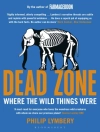Much has been written about the “long Sixties, ” the era of the late 1950s through the early 1970s. It was a period of major social change, most graphically illustrated by the emergence of liberatory and resistance movements focused on inequalities of class, race, gender, sexuality, and beyond, whose challenge represented a major shock to the political and social status quo. With its focus on speculation, alternate worlds and the future, science fiction became an ideal vessel for this upsurge of radical protest.
Dangerous Visions and New Worlds: Radical Science Fiction, 1950 to 1985 details, celebrates, and evaluates how science fiction novels and authors depicted, interacted with, and were inspired by these cultural and political movements in America and Great Britain. It starts with progressive authors who rose to prominence in the conservative 1950s, challenging the so-called Golden Age of science fiction and its linear narratives of technological breakthroughs and space-conquering male heroes. The book then moves through the 1960s, when writers, including those in what has been termed the New Wave, shattered existing writing conventions and incorporated contemporary themes such as modern mass media culture, corporate control, growing state surveillance, the Vietnam War, and rising currents of counterculture, ecological awareness, feminism, sexual liberation, and Black Power. The 1970s, when the genre reflected the end of various dreams of the long Sixties and the faltering of the postwar boom, is also explored along with the first half of the 1980s, which gave rise to new subgenres, such as cyberpunk.
Dangerous Visions and New Worlds contains over twenty chapters written by contemporary authors and critics, and hundreds of full-color cover images, including thirteen thematically organised cover selections. New perspectives on key novels and authors, such as Octavia Butler, Ursula K. Le Guin, Philip K. Dick, John Wyndham, Samuel Delany, J.G. Ballard, John Brunner, Judith Merril, Barry Malzberg, Joanna Russ, and many others are presented alongside excavations of topics, works, and writers who have been largely forgotten or undeservedly ignored.
O autorze
Iain Mc Intyre is a Melbourne-based author, musician, and community radio broadcaster who has written a variety of books on activism, history, and music. Previous publications include Sticking It to the Man: Revolution and Counterculture in Pulp and Popular Fiction, 1956 to 1980 (2019); On the Fly! Hobo Literature and Songs, 1879–1941 (2018); Girl Gangs, Biker Boys and Real Cool Cats: Pulp Fiction and Youth Culture, 1950 to 1980 (2017); How to Make Trouble and Influence People: Pranks, Protest, Graffiti & Political Mischief-Making from across Australia (2013); Wild About You: The Sixties Beat Explosion in Australia and New Zealand (2010); and Tomorrow Is Today: Australia in the Psychedelic Era, 1966–70 (2006).












